HAND & WRISTS FOR BOXING
The hand and wrist are amongst the most common sites of injury in boxers.
This isn’t surprising given the repetitive trauma sustained by the hands and wrists throughout camp and the acute trauma observed during competition.
Considering the high prevalence of hand and wrist injuries in boxing, how can strength training be used as a protective mechanism against hand and wrist injuries, what are some of the training considerations that need to be addressed to reduce the risk of hand and wrist injuries and what type of strength exercises can be included in a boxer’s program to increase stability and strength of the hand and wrist?
With these questions in mind, this article will discuss:
The incidence of hand and wrist injury in boxing.
Risk factors that may potentially make athletes more susceptible to hand an wrist injuries.
Testing/assessing for hand or wrist dysfunction.
Strength training strategies to mitigate the risk of hand and wrist injuries among boxers.
Sample exercises that can be used to target endurance, strength and stability of the hand and wrist region.
INCIDENCE OF HAND INJURIES IN BOXING
Longitudinal studies of injury occurrence in boxing have shown that injuries to the hand and wrists are the most common of all injuries sustained by elite boxers (1, 2).
These injuries account for 16-35% of all boxing related injuries and also result in the longest time away from training or competition.
Though hand and wrist injuries have a relatively short recovery period, the chances of re-occurrence are high consequently time away from training/competition can accumulate.
A similar number of hand and wrist injuries have been reported in training and competition, whilst higher injury rates to the hand and wrist have been observed in competition (347 injuries per 1000 hours) compared to training (< 0.5 injuries per 1000 hours) (1).
Of the hand and wrist injuries sustained by elite boxers across a five year period, carpometacarpal instability (21.6%) and an injury known as ‘boxer’s knuckle’ (15.8%) were the most common.
Regions of the hand and wrist that tend to be affected most often include the knuckle, the thumb and the back of the hand.
Injuries to these areas can be either acute (a sudden bout of excessive force e.g throwing a hook to the body and hitting the opponents elbow) or chronic (repetitive bouts of low-moderate impact sustained over time, gradually impairing the athletes to deliver punches).
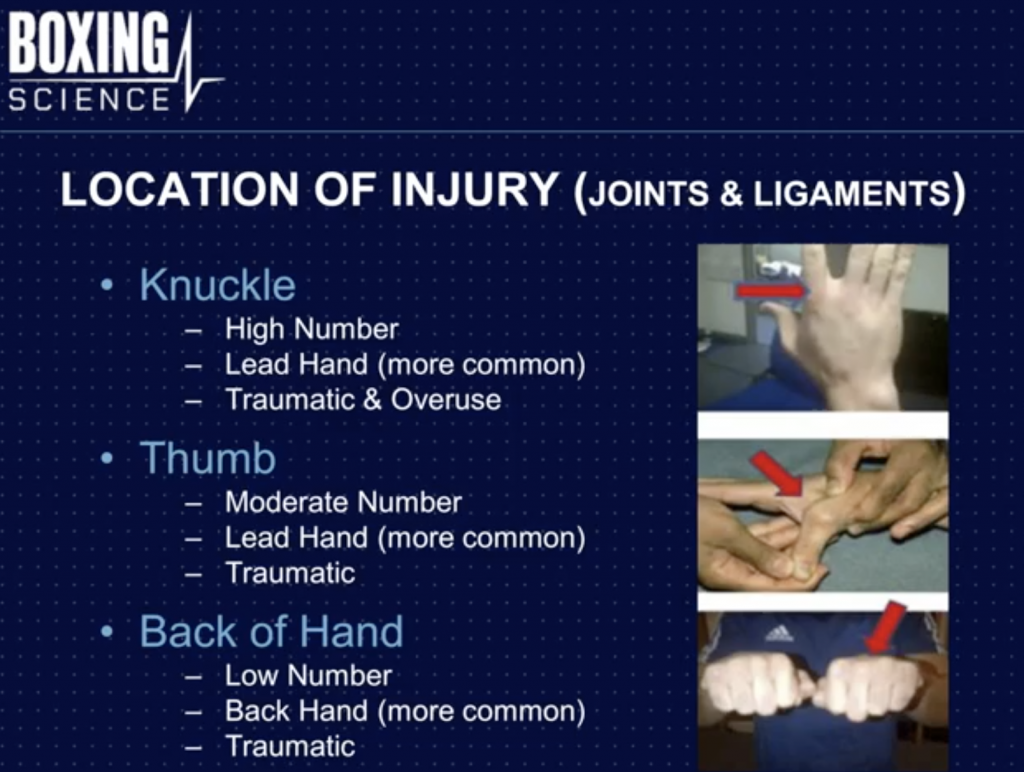
Chronic or overuse injuries are more common in the knuckle, particularly of the lead hand due to the prominence of the jab in most competition and training scenarios.
In contrast, injuries to the thumb and back of the hand can often be acute in nature particularly in the rear hand.
This is because rear hand punches are associated with large impact forces due to the rotational element of the torso and greater involvement of the lower body.
Additionally, injuries to these regions can be a consequence of substantial forces imposed directly on the bony structure or indirectly as a result of excessive impact to areas near the joint that cause either of the connecting bony surfaces to dislodge.
HOW DO HAND AND WRIST INJURIES OCCUR?
In most team and individual sports injuries to the hand and wrist are sustained as a result of falling onto an outstretched hand or abnormal impact with an implement such as a ball (3, 4).
Contrastingly, hand and wrist injuries in boxing and other combat sports tend to occur as a result of the large impact forces associated with delivering a punch to the opponent (1).
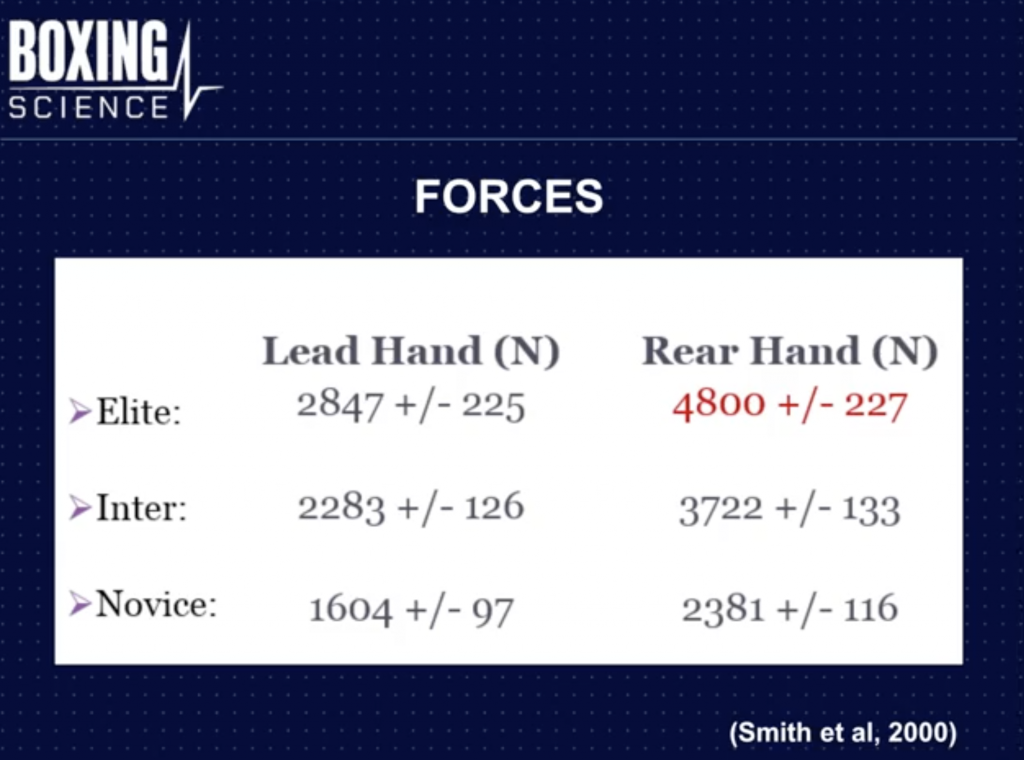
The higher rates of injury per 1000 hours in competition compared to sparring are a result of larger punch forces and less protection around the hand and wrist due to lighter gloves in a competition environment (1).
Moreover, every punch in training is not executed with maximal intent and there is a tendency for boxers to ‘pull’ punches in a training environment, therefore reducing the impact forces imparted on the hand and wrist (1).
We must also consider that training hours include sessions that do not involve punching such as running and strength sessions whereas competition obviously places a large emphasis on punching actions.
With the onset of fatigue, the wrist can be exposed to sub-optimal positions when delivering punches. This ultimately compromises the stability of the hand, increasing the chances of acute injury on impact as the fight continues.
As eluded to previously, there is a higher risk of sustaining injuries from back hand and ‘power punches’ due to the larger forces when throwing these punches (5).
Previous research has highlighted the influence of fighting style on the incidence of hand and wrist injury in boxing (6).
More aggressive fighters who throw a larger volume of power punches such as uppercuts and hooks are likely to be more susceptible to acute hand and wrist injuries compared to more elusive fighters who predominately box on the back foot behind their jab.
Gender can also be considered a risk factor for hand and wrist injuries, with males displaying a higher prevalence of injury in this region compared to females (6). This could potentially be a result of differences in the absolute force production capabilities between genders as males tend to produce higher forces compared to their female counterparts (7, 8).
Finally, body mass is also a risk factor for sustaining hand and wrist injuries. Heavier athletes have the potential to produce higher degrees of momentum and therefore greater impact forces compared to lighter weight categories.
As referred to above, these impact forces make the hand and wrist more susceptible to injury.
There is an additional body mass factor that can increase the risk of injury when considering the usual weight gain that occurs in periods between camps and the sudden spike in punching volume when returning to boxing training.
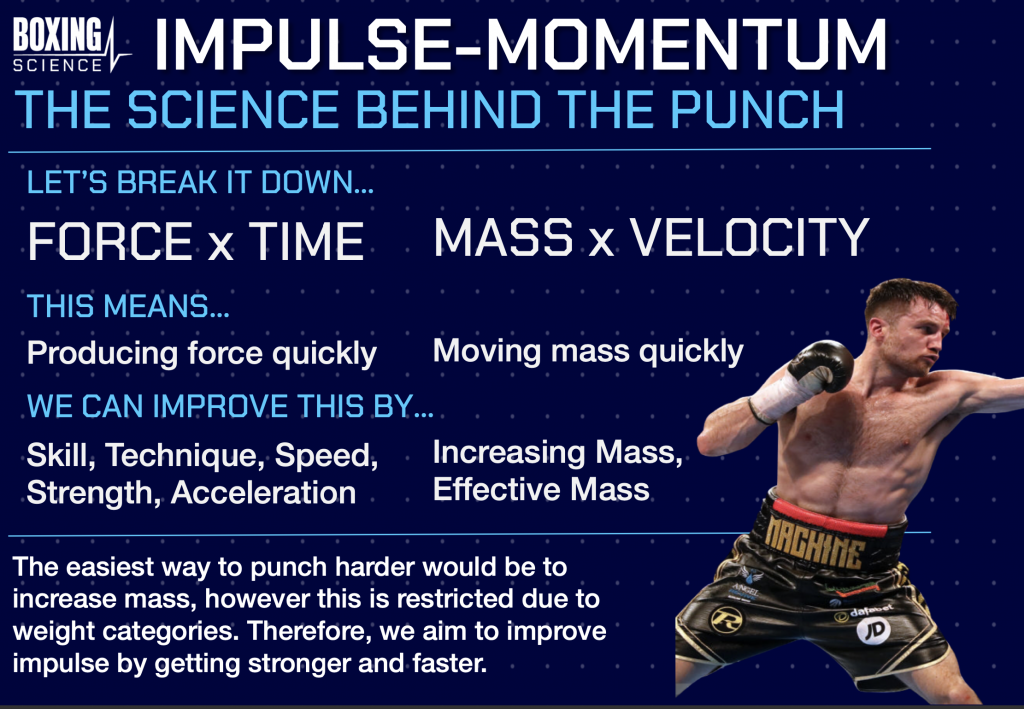
STRENGTH TRAINING FOR THE HAND & WRISTS
Whilst there are numerous exercises we can use as strength and conditioning coaches to solidify the hand and wrist region for boxing, some basic training elements can go a long way in terms of minimising the risk of injury.
Firstly, monitoring training load and punching volume when returning to training following a lengthy lay off can reduce the occurrence of both acute and chronic injuries to the hand and wrist.
Incorporating more footwork, shadow boxing and defensive practice in the initial couple of weeks of training camp is an effective way to offset spikes in high impact punching and gradually prepare the athlete for more strenuous technical practice as training camp progresses.
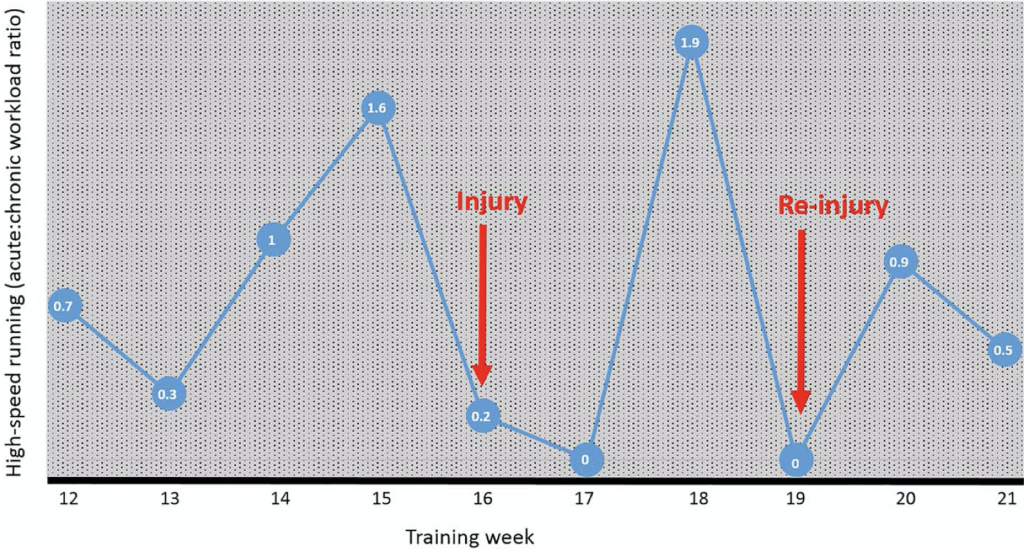
Secondly, boxing gloves and wrapping need to be checked frequently to make sure optimal protection is provided in training environments.
This is particularly true at the elite standard where high training and punching volumes are likely to rapidly decrease the protection provided by gloves.
Checking glove condition should be treated the same as monitoring the degree of wear and tear on running shoes and should be changed every 3-6 months, depending on the boxer’s activity level.
Lastly, staying in the gym and maintaining some training continuity following bouts is a serious consideration to avoid accumulating excessive amounts of fat mass and minimise the force absorption demands of joints when returning to training.
Testing hand grip strength or endurance is also a useful way to detect potential hand-wrist dysfunction.
Whilst there are many hi-tech and sophisticated means of measuring handgrip strength using various dynamometers, we can also use two 10 kg plates and a stopwatch in what is known as the pinch grip hold test.
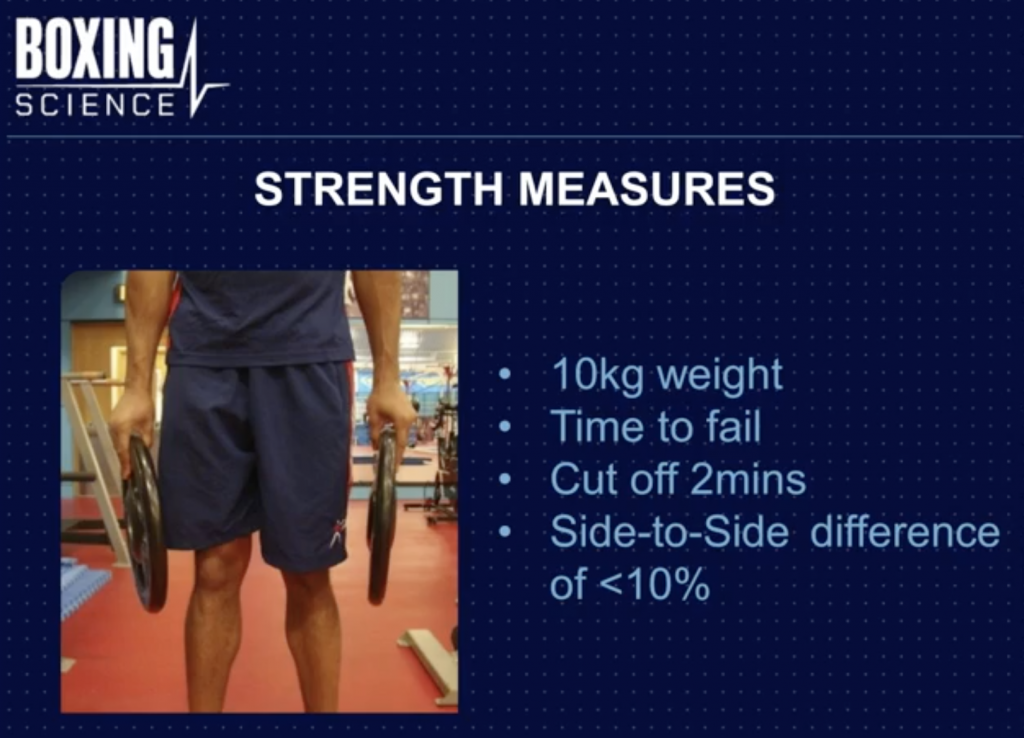
During this test, we are essentially assessing the strength endurance capabilities of both sides by recording the time to failure for either side.
We are primarily concerned with the percentage difference in hold duration between either side.
Ideally, the boxers will have a percentage difference less than 10%.
A difference greater than 10% is indicative of weakness or potential injury and due caution should be observed when intending to load the impaired side.

STRENGTH TRAINING METHODS FOR THE HAND AND WRIST
With any region of the body, we should aim to reduce the region’s susceptibility to injury whilst also placing emphasis on optimising performance.
To do this, it is important to target endurance, strength and stability functions of the given region using appropriate exercises.
For the hand and wrist, specifically it is important to consider the various functions of this region in boxing.
We know that boxers do not maintain a clenched ‘fist’ grip for the duration of the fight as this would impair fluidity and drain energy.
Instead, boxers will relax their grip within the glove usually with an open palm before rapidly tensing the upper limb and clenching the fist when throwing punches.
This open-close function of the hand and wrist should be included in any training program seeking to prepare this region for the demands of boxing.
It is also important to consider the role hand and wrist endurance plays throughout a fight.
We know that endurance can be defined as the ability to sustain repeated contractions against low-moderate resistance.
Repeated open and closing associated with punching leads to the onset of fatigue within the hand-wrist complex and thus gradually impairs joint stability.
This increases the risk of sustaining an injury in the latter half of a fight, therefore appropriate endurance training should be prescribed for the hand and wrist region to be able to maintain effective punching technique during a bout.
Stability of the hand and wrist is also an important training goal to consider.
From research by Mcgill and colleagues in 2010 (11), found a double peak in muscle activation exists when throwing a punch.
During the second peak in muscle activation, which occurs on impact, the hand and wrist are required to be stable as possible to optimise force transfer to the opponent.
As such, it is important we challenge the hand and wrist’s stability whilst also promoting tension throughout the whole upper limb to maximise stiffness and effective mass at the end range of a punch.
HAND & WRIST EXERCISES FOR BOXING
In the following section we will present examples of the common hand and wrist exercises we program at Boxing Science.
These exercises can be categorised into endurance, strength and stability or proprioception-based exercises.
ENDURANCE
For endurance adaptations, it is difficult to look beyond hold variations, that involve little to no movement but still demand high levels of muscle tension.
The pinch hold (same as the one described above for testing) is an excellent variation that focuses on endurance of the hand and wrist when adopting the pinch grip.
Developing strength and endurance in the pinch grip is important for maximising the open-close function of the hand and wrist.
Other hold variations that can improve endurance throughout the whole kinetic chain, including the hand and wrist are farmer’s holds.
With farmer’s holds we can really overload trunk, an upper limbs and force the athlete to generate high levels of tension which will transfer to the punching action.
To maximise endurance we usually perform these holds for 20-40s for 3-4 sets.
STRENGTH
For strength development of the hand and wrist it is important to consider applying load through ranges of motion.
We can strengthen the pinch grip further by using the following exercises:
As suggested in the name, these two exercises primarily target the pinch grip, but in a more dynamic way.
This is specific to boxing and the open-close function of hand and wrist when throwing a punch from the guard position.
To shift the emphasis towards the wrist slightly more we can incorporate reverse curl variations.
An added benefit of these exercises is that we can target eccentric strength of the wrist which is needed to suddenly generate sufficient tension in the hand on impact.
When performing dumbbell reverse curls, it is important to cue the athlete to focus on maintain the prone (palms facing down) hand position.
Often, athletes will begin to display a slightly supinated hand position on one side as the set goes on due to fatigue.
This will ultimately reduce the eccentric emphasis placed on the muscles of the forearm and wrist therefore defeating the purpose of the exercise.
The barbell allows us to use heavier loads and therefore obtain further strength adaptations.
Also, the barbell essentially forces the hand into pronation, helping us focus on eccentric strength.
To further isolate the wrist, we must use exercises that places the forearm in a fixed or passive position.
Dumbbell reverse wrist curls are an example of an exercise that targets the wrist primarily:
To target pure strength with these exercises, lower volumes and relatively heavy (as heavy that allows for correct technique) loads are required.
Reps: 5-8
Sets: 3-5
Stability & Proprioception
To maximally develop stability in the hand and wrist we use exercises that challenge the wrist’s ability to maintain stable whilst other joints are loaded through a given range of motion.
A common example used in boxing gyms is the knuckle press up.
However, at Boxing Science we prefer performing press ups on dumbbells to minimise shear stress on the knuckle whilst optimally challenging wrist stability.
We can progress the challenge on wrist stability further by incorporating elements of proprioception into exercises.
One way we can do this is by manipulating the base of support available to the athlete in the plank position.
These plank variations are also effective for core and posterior shoulder stability and therefore target the entire kinetic chain whilst stability is maintained at the wrist.
It is important to note that the shape of the weights will make a difference when performing these exercises.
Round weights will have a greater tendency to move and consequently will demand more from a stability perspective, whereas hexagonal dumbbells will provide the athlete with more support.
Another method of incorporating proprioception around the hand and wrist is through the use of barbell holds.
In this case, the athlete is forces to resist the tilting of the barbell in order to keep it in a neutral position.
In a similar fashion, we can incorporate shoulder strength and mobility whilst focusing on the wrist’s ability to tolerate subtle changes in force application using the bottoms up kettlebell press:
For proprioception exercises, we usually perform 3-4 sets of 10-20 m on each side for barbell farmer walks.
For dynamic proprioception exercises, we usually perform 8-10 reps on each side or in total by 3-4 sets.
PROGRAMMING
These exercises can be integrated to any strength session.
We typically perform these with our athletes towards the end of a session and generally prefer the exercises that target other areas (i.e., core stability, posterior shoulder activation) as well as hand and wrist strength, stability or endurance.
Alternatively these exercises can be included at the end of a boxing session.
SUMMARY
The hand and wrist is the most common site of injury among boxers.
Boxers belonging to heavier weight classes, males and more aggressive fighters are potentially at greater risk of sustaining an injury to the hand or wrist.
Basics means of avoiding hand and wrist injury include monitoring training load/punch volume, regularly checking the condition of gloves and minimising weight gain between training camps.
From a strength and conditioning perspective it is important to target the hand-wrist region using a combination of endurance, strength and stability or proprioception-based exercises.
REFERENCES
(1) Loosemore, M., Lightfoot, J., Gatt, I., Hayton, M. and Beardsley, C., 2017. Hand and wrist injuries in elite boxing: a longitudinal prospective study (2005-2012) of the Great Britain Olympic Boxing Squad. Hand, 12(2), pp.181-187.
(2) Loosemore, M., Lightfoot, J., Palmer-Green, D., Gatt, I., Bilzon, J. and Beardsley, C., 2015. Boxing injury epidemiology in the Great Britain team: a 5-year surveillance study of medically diagnosed injury incidence and outcome. British journal of sports medicine, 49(17), pp.1100-1107.
(3) Rettig, A.C., 1998. Epidemiology of hand and wrist injuries in sports. Clinics in sports medicine, 17(3), pp.401-406.
(4) Aitken, S. and Court-Brown, C.M., 2008. The epidemiology of sports-related fractures of the hand. Injury, 39(12), pp.1377-1383.
(5) Smith, M.S., Dyson, R.J., Hale, T. and Janaway, L., 2000. Development of a boxing dynamometer and its punch force discrimination efficacy. Journal of sports sciences, 18(6), pp.445-450.
(6) Lemme, N.J., Ready, L., Faria, M., DeFroda, S.F., Gil, J.A. and Owens, B.D., 2018. Epidemiology of boxing-related upper extremity injuries in the United States. The Physician and sportsmedicine, 46(4), pp.503-508.
(7) Jones, E.J., Bishop, P.A., Woods, A.K. and Green, J.M., 2008. Cross-sectional area and muscular strength. Sports Medicine, 38(12), pp.987-994.
(8) Laffaye, G., Wagner, P.P. and Tombleson, T.I., 2014. Countermovement jump height: Gender and sport-specific differences in the force-time variables. The Journal of Strength & Conditioning Research, 28(4), pp.1096-1105.
(9) Blanch, P. and Gabbett, T.J., 2016. Has the athlete trained enough to return to play safely? The acute: chronic workload ratio permits clinicians to quantify a player’s risk of subsequent injury. British journal of sports medicine, 50(8), pp.471-475.
(10) Gatt, I., Smith-Moore, S., Steggles, C. and Loosemore, M., 2018. The takei handheld dynamometer: an effective clinical outcome measure tool for hand and wrist function in boxing. Hand, 13(3), pp.319-324.
(11) McGill, S.M., Chaimberg, J.D., Frost, D.M. and Fenwick, C.M., 2010. Evidence of a double peak in muscle activation to enhance strike speed and force: an example with elite mixed martial arts fighters. The Journal of Strength & Conditioning Research, 24(2), pp.348-357.
